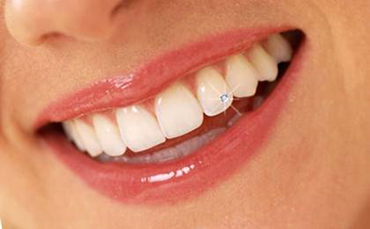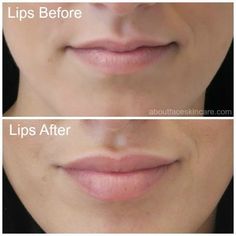Tooth extraction is the removal of a tooth from its socket in the bone. Sometimes, there’s too much damage for the tooth to be repaired. In this case, the tooth needs to be extracted. A very loose tooth also needs extraction if it can’t be saved due to severe bone loss. Teeth may be extracted for orthodontic treatment, in case of radiation therapy, supernumerary etc. There are two types of extractions: A simple extraction– For a simple extraction, the dentist loosens the tooth with an instrument called an elevator or luxator. Then the dentist uses forceps to remove the…
Read More
As the name implies, Full Mouth Rehabilitation refers to treating, rebuilding and/or replacing all or most of the teeth in a patient’s mouth. Full mouth reconstructions combine esthetics with the science of restorative dentistry to improve the health, function, and aesthetics of the face and mouth. It is done in cases of multiple missing teeth, multiple decayed teeth, huge fillings that need repair, cracked or broken teeth, or badly worn teeth due to clenching, grinding, or other habits. The treatment options include on lays, inlays, crowns, bridges, veneers, dental implants, and/or dentures. It provides not only a “smile makeover”, but improved chewing efficiency and confidence for the…
Read More
A dental implant is a surgical fixture that is placed into the jawbone and allowed to fuse with the bone over the span of a few months. The dental implant acts as a replacement for the root of a missing tooth. In turn, this “artificial tooth root” serves to hold a replacement tooth or bridge. Having a dental implant fused to the jawbone is the closest thing to mimicking a natural tooth because it stands on its own without affecting the nearby teeth and has great stability. The process of fusion between the dental implant and jawbone is called “osseointegration.”…
Read More
Replacement of missing teeth can be done with fixed or removable prosthesis. Fixed Prosthesis Includes 1. Crowns And Bridges 2. Implants Crowns And Bridges Bridges and crowns are fixed prosthetic devices that are cemented onto existing teeth or implants. Crowns Crowns are used most commonly to entirely cover a damaged tooth or cover an implant. The primary function is to protect the underlying tooth and restore form, function and aesthetics. There are temporary crowns which are made of acrylic. There are permanent crowns made of different materials like white metal(co-cr), porcelain fused to metal (ceramic), Zirconia, Bruxzir etc. They are…
Read More
Tooth jewellery is for all patients who want a dazzling smile. The advantages of it being a temporary, painless procedure and it do not involve any invasive treatment on the tooth like drilling holes. Tooth jewellery is a procedure in which an artificial gem is stuck on the tooth using composite material. It adds sparkle to your smile! Tooth jewellery is gaining popularity amongst the youth for it being a very simple, temporary and non invasive procedure.
Read More
Botox is commonly used for smoothing of facial wrinkles. Botox has important clinical uses as an adjunct in TMJ and bruxism cases, and for patients with chronic TMJ and facial pain. Botox is also used to complement esthetic dentistry cases, as a minimally invasive alternative to surgically treating high lip line cases, denture patients who have trouble adjusting to new dentures, lip augmentation, and has uses in orthodontic cases where retraining of the facial muscles is necessary. No other healthcare provider has the capability to help patients in so many areas as do dentists. Dermal fillers are commonly used to add…
Read More
Orthodontics is the branch of dentistry that corrects teeth and jaws that are positioned improperly. An orthodontist uses a range of dental devices, including headgears, plates, braces, etc. to help in: Closing wide gaps between the teeth Making sure the tips of the teeth are aligned Straightening crooked teeth To improve speech or eating (oral function) To improve the long-term health of gums and teeth To prevent long-term excessive wear or trauma (of the teeth) Treating an improper bite
Read More
Splinting of teeth means immobilization of teeth by joining of teeth by means of wire or other dental material in cases of trauma, periodontally weak teeth etc. It is done as a maintenance for orthodontic treatment also. It also helps in healing after periodontal surgeries. Splinting helps to distribute the forces, stabilization and reorientation of forces, modify occlusal contact patterns, improve masticatory efficiency.
Read More
Silver amalgam filling is made by mixing liquid mercury with silver alloy powder. Dental amalgam is a common material used to fill cavities.This is commonly known as silver fillings. It is a very rigid material and is the strongest direct restorative material.The longevity of the material is very good. It is less technique sensitive. It is indicated for restoration of posterior teeth. It is an economical option for patients who cannot afford other restorations like composite. The caries is removed and proper cavity form is given, a base or liner is placed and then silver amalgam is filled in the…
Read More
A removable partial denture is a restoration that replaces or spans the space where one or more teeth have been damaged and lost. As its name describes, removable partial dentures can readily be taken out of the mouth for cleaning.A partial denture may have a metal framework and clasps that connect to your teeth, or they can have other connectors that are more natural looking. Removable partial dentures are preferred in case of long span edentulous cases, distal extension cases, in case where implants can’t be placed, economic constraints, periodontically weak adjacent teeth, where fixed prosthesis cannot be given etc.…
Read More










